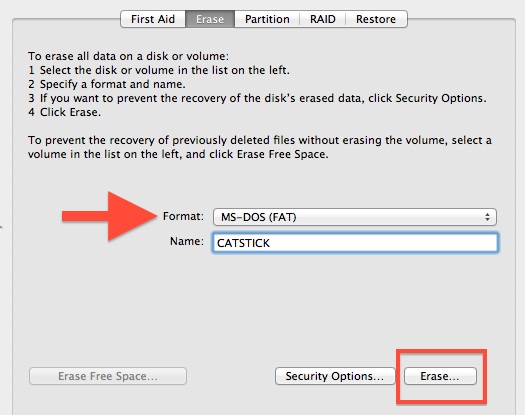

- #How to format external hard drive mac on ubuntu how to#
- #How to format external hard drive mac on ubuntu mac os#
For more information on this, see my guide on how to read and format in NTFS on Mac.

To make your Mac fully compatible with NTFS, and then freely write and format drives formatted with this file system, you must install third-party drivers on your PC (for a fee). You can format them, but only using other file systems, and you can't write them (i.e. By default, macOS can only read drives formatted with this file system. Preferable only if the disc is used only on Mac.Īs you can see the file system is not on appeal NTFS Windows How come The answer is simple. Technically, it does not present particularly strict limits for file sizes and does not generate much fragmentation, however, its degree of compatibility outside the Mac world is poor (on Windows, for example, it requires third-party drivers to use it).
Mac OS daily extended (HFS +) - this is the default file system for macOS. It is definitely the best option if you need to use your hard drive not only on Mac. It is not as compatible as FAT32, but it is seamlessly compatible with all major PC operating systems and with many smart TVs, set-top boxes, tablets, and lounge players. exFAT - as the name quite easily suggests, it is an evolution of FAT32 that reduces the level of data fragmentation and removes the 4GB weight limit. I advise you to choose this operation only if you have to use your hard drive with a large number of devices and you do not have to use it to host very large files (so there are no HD movies, compressed files or ISO files larger than 4GB). On the other side of the coin we have some not insignificant defects, such as high data fragmentation and the impossibility of storing files larger than 4 GB. Simply put, hard drives formatted with this file system can be used (read and write) on all PCs, all major OS and even devices like tablets, smart TVs, set-top boxes, and DVD / Blu-Ray players. MS-DOS FAT (FAT32) - is a rather outdated file system, but precisely for this reason it guarantees a very high level of compatibility. If you don't know which file system to choose, here is a brief overview of all available and their main features.






 0 kommentar(er)
0 kommentar(er)
